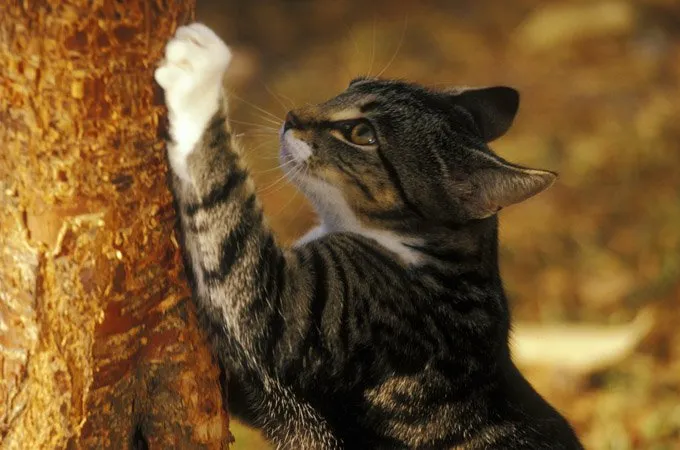Introduction
Unveiling the Enigma of Feline Scratching
Ah, the unmistakable sound of claws meeting a rough surface—the telltale sign that your feline friend is indulging in one of their favorite activities: scratching. But have you ever wondered why cats feel the need to scratch everything in sight, from furniture to scratching posts? Join me on a journey as we delve into the fascinating world of feline scratching and uncover the reasons behind this seemingly innate behavior.
The Anatomy of a Scratch: Understanding the Basics
Let’s start by breaking down what exactly happens when a cat scratches. When your furry companion extends its claws and drags them along a surface, it serves several purposes. Not only does it help to remove the outer sheath of the claw, keeping it sharp and healthy, but it also allows the cat to stretch its muscles and mark its territory with scent glands located in its paws.
Instinctual Behavior: Tracing the Origins of Scratching
But why do cats scratch in the first place? To answer that question, we must look to their wild ancestors. In the wild, scratching serves multiple functions essential for survival. From sharpening their claws for hunting and climbing to marking their territory and stretching their muscles after a long nap, scratching is ingrained in a cat’s instinctual behavior.
A Natural Need: The Physical Benefits of Scratching
Scratching isn’t just a random habit—it’s a vital aspect of a cat’s physical health and well-being. By regularly engaging in scratching, cats can maintain the health of their claws and prevent them from becoming overgrown or ingrown. Additionally, scratching allows cats to stretch their bodies and flex their muscles, promoting good circulation and preventing stiffness.
A Means of Communication: The Social Significance of Scratching
In addition to its physical benefits, scratching also plays a crucial role in feline communication. When a cat scratches a surface, it leaves behind both visual and olfactory cues that convey important information to other cats in the area. These scent markings help to establish territory boundaries, communicate social status, and even attract potential mates.
Environmental Enrichment: The Psychological Rewards of Scratching
But scratching isn’t just about meeting physical needs—it’s also deeply intertwined with a cat’s emotional well-being. For cats, scratching is a form of environmental enrichment that provides mental stimulation and relieves stress. By engaging in this natural behavior, cats can release pent-up energy, alleviate boredom, and express their innate instincts.
The Importance of Providing Outlets: Meeting Your Cat’s Scratching Needs
As responsible pet owners, it’s essential to recognize and accommodate your cat’s natural scratching behavior. Providing appropriate scratching surfaces, such as scratching posts, cardboard scratchers, or sisal mats, allows your cat to engage in scratching without causing damage to your furniture. Additionally, regularly trimming your cat’s claws can help to minimize scratching-related issues.
Debunking Common Myths: Addressing Misconceptions About Scratching
Despite its many benefits, scratching is often misunderstood and misinterpreted by cat owners. Some may view scratching as destructive behavior or attempt to discourage it through punitive measures. However, it’s crucial to understand that scratching is a natural and necessary behavior for cats and should be encouraged in a positive and constructive manner.
Conclusion
Embracing the Essence of Feline Scratching
In conclusion, scratching is far more than just a quirky behavior—it’s an essential aspect of a cat’s physical, emotional, and social well-being. By understanding the reasons behind your cat’s scratching habits and providing appropriate outlets for this behavior, you can ensure that your feline friend leads a happy and fulfilling life. So, the next time you hear the familiar sound of claws against a surface, remember to celebrate your cat’s innate instincts and embrace the essence of feline scratching.
- Best Clay Alternatives for 2025 - April 19, 2025
- Best Seamless.ai Alternatives for 2025 - April 19, 2025
- Best UpLead Alternatives for 2025 - April 18, 2025



